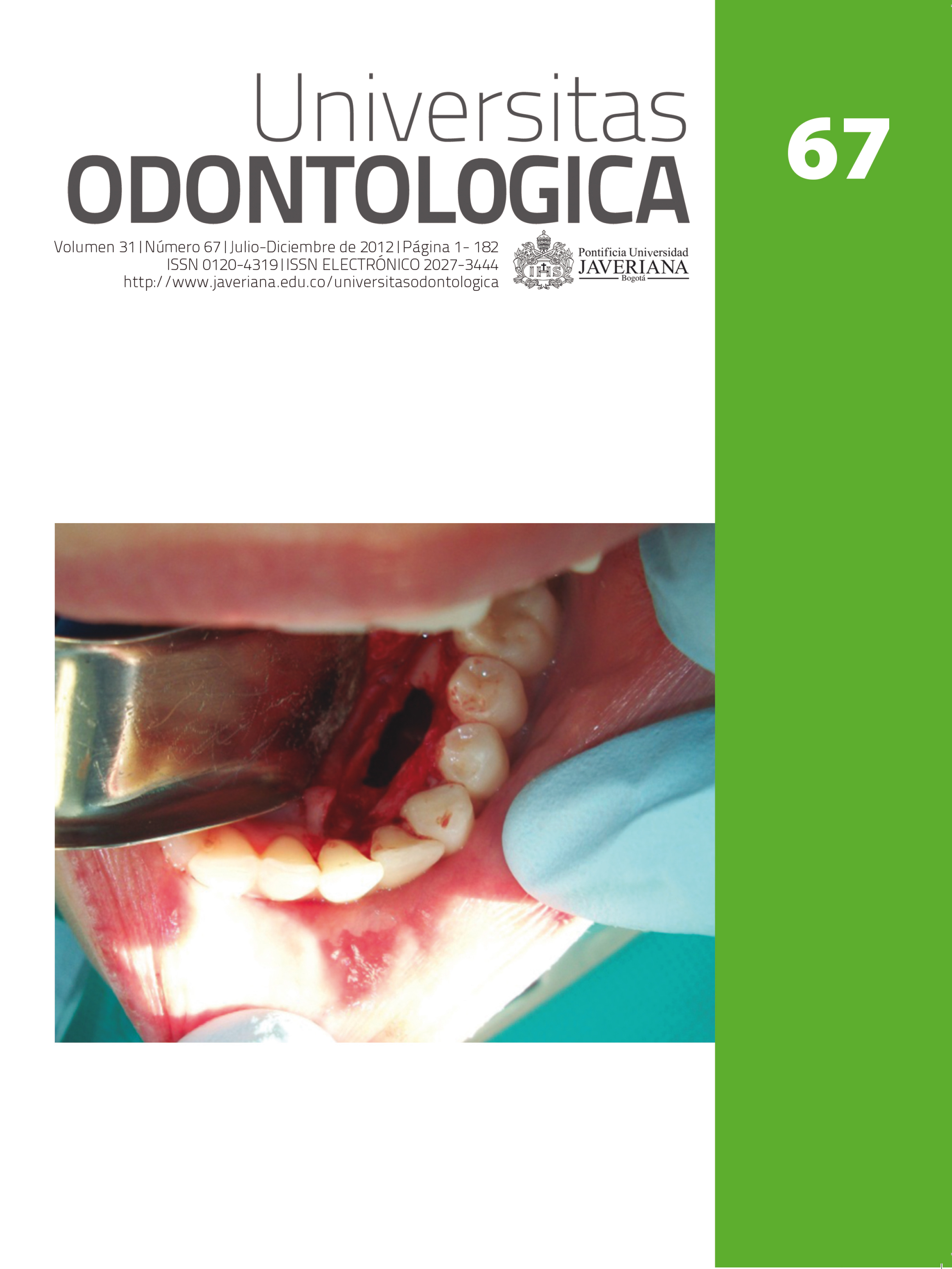Abstract
Objetivo: Presentar los principales conceptos de radiobiología, radioterapia en cavidadoral y complicaciones asociadas, para llevar a cabo acciones seguras de tipo preventivo yterapéutico por parte del profesional o del equipo tratante. Método: La revisión se llevó acabo en diferentes bases de datos y revistas acerca del manejo odontológico de pacientessometidos a radioterapia. Resultados: Actualmente, el tratamiento para el cáncer tiene unenfoque multidisciplinario, en el cual participan distintos profesionales de la salud (incluidoel odontólogo) en las fases de diagnóstico, tratamiento específico mediante extirpaciónquirúrgica, tratamiento citotóxico con quimioterapia y radiaciones ionizantes, y rehabilitación.La radioterapia trae consigo complicaciones producto de la interacción de las radiacionesionizantes con el organismo: efectos de tipo físico, químico y biológico, debido a lainteracción entre las partículas cargadas y los átomos del tejido irradiado. Adicionalmente,se llevan a cabo reacciones enzimáticas que reparan la mayoría de las lesiones radioinducidas,como daños en el ADN, y los principales efectos radiobiológicos negativos o adversos.En la cavidad oral se presentan complicaciones de tipo agudo como mucositis, xerostomíay riesgo de infección; al igual que reacciones tardías como alteración en la vascularizaciónde hueso y mucosa, daño en glándulas salivares, reducción celular en el tejido conectivo yriesgo de incremento en la síntesis de colágeno, lo que resulta en fibrosis y produce tejidoshipovasculares, hipocelulares e hipóxicos, que afectan al hueso, pues reduce su capacidadde remodelación e incrementa su riesgo de infección y osteorradionecrosis.
Objective: To introduces the main concepts in radiobiology, radiotherapy in the oral cavity,and complications associated with them, in order to carry out preventive and curativeactions safely by the health professional and team. Method: The review was performed inseveral databases and journals on the dental care of patients undergoing radiotherapy. Results:Currently, treatment for cancer is carried out through a multidisciplinary approach withdifferent health professionals (including dentists) participating to determine its diagnosis,specific treatment through surgical removal, cytotoxic treatment with chemotherapy and/or ionizing radiation, and rehabilitation. Radiotherapy produces complications as a reactionbetween the ionizing radiation and the body: Physical, chemical and biological effects due tointeractions between the charged particles and the atoms of the irradiated tissue; in addition,enzymatic reactions take place to repair most of the radioinduced lesions, like damagein the DNA, the main negative or adverse radiobiological effects. In the oral cavity, there areacute reactions such as mucositis, xerostomia and risk of infection, as well as late reactionssuch as alterations of bone and mucose vascularization, saliva gland damage, cell reductionin connective tissue, and risk of collagen synthesis increase, which results in fibrosis andhypovascular, hypocellular and hypoxic tissues that affect bones because its remodelingcapacity is diminished and the risk of infection and osteoradionecrosis is increased.
This journal is registered under a Creative Commons Attribution 4.0 International Public License. Thus, this work may be reproduced, distributed, and publicly shared in digital format, as long as the names of the authors and Pontificia Universidad Javeriana are acknowledged. Others are allowed to quote, adapt, transform, auto-archive, republish, and create based on this material, for any purpose (even commercial ones), provided the authorship is duly acknowledged, a link to the original work is provided, and it is specified if changes have been made. Pontificia Universidad Javeriana does not hold the rights of published works and the authors are solely responsible for the contents of their works; they keep the moral, intellectual, privacy, and publicity rights.
Approving the intervention of the work (review, copy-editing, translation, layout) and the following outreach, are granted through an use license and not through an assignment of rights. This means the journal and Pontificia Universidad Javeriana cannot be held responsible for any ethical malpractice by the authors. As a consequence of the protection granted by the use license, the journal is not required to publish recantations or modify information already published, unless the errata stems from the editorial management process. Publishing contents in this journal does not generate royalties for contributors.


